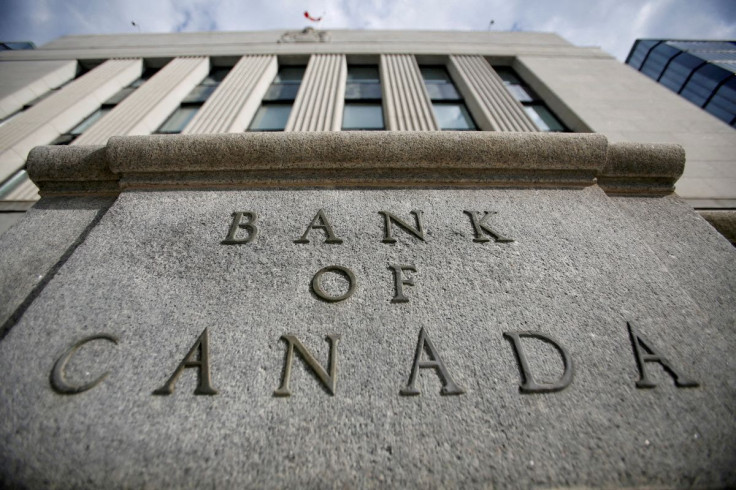Bank Of Canada Surprises With 100-bp Rate Hike As Price Risks Gather Steam

The Bank of Canada on Wednesday raised its benchmark interest rate by a full percentage point, surprising markets with its biggest rake hike since 1998 in a bid to tame soaring inflation.
The central bank, in a regular rate decision, raised its policy rate to 2.5% from 1.5%, and said more hikes would be needed. The move was more forceful than the 75-basis point increase economists and money markets had forecast.
"With the economy clearly in excess demand, inflation high and broadening, and more businesses and consumers expecting high inflation to persist for longer, the Governing Council decided to front-load the path to higher interest rates," the bank said.
"Interest rates will need to rise further," it added.
The move makes it the first G7 central bank to increase rates by 100 basis points in this cycle. It follows a 75 basis point rate hike by the U.S. Federal Reserve last month.
"The Bank of Canada saw the Fed hike 75 bps and said 'Hold my beer,'" said Royce Mendes, head of macro strategy at Desjardins Group, noting hawkish language in the statement that accompanied the "colossal move."
In its statement, the Bank of Canada raised its near-term inflation forecasts and made clear it expects price gains to go higher, averaging around 8% in the middle quarters of 2022. Canada's inflation rate hit 7.7% in May, near a 40-year high.
The central bank now sees inflation averaging 7.2% this year, falling to about 3% by the end of 2023 and then back to the 2% target by the end of 2024.
The jumbo hike, which sent the Canadian dollar higher, was designed to "front-load the path to higher interest rates," the bank said. It has been playing catch-up for months after significantly underestimating the persistence of inflation.
But the move combined with the promise of more coming could spook markets, said economists.
"I think the market is going to be on edge here about the possibility of more upside surprises on rate hikes," said Doug Porter, chief economist at BMO Capital Markets.
SLOWER GROWTH
The policy rate is now at the nominal neutral rate - the midpoint between 2% and 3% - where monetary policy is neither stimulative nor restrictive.
The Canadian dollar was trading 0.4% higher after the news at 1.2970 to the greenback, or 77.10 U.S. cents.
The Bank of Canada noted a "sharp slowdown" in Canada's housing market was underway, with that contraction expected to continue this year and into 2023.
Economic growth is now expected to be lower this year, with gross domestic product rising 3.5%, then slowing to 1.8% in 2023.
The slower growth is "largely due to the impact of high inflation and tighter financial conditions on consumption and household spending," the bank said. Its baseline forecast is for a soft landing, with no recession over the next three years.
Governor Tiff Macklem, who just recovered from COVID-19, participated in the rate decision remotely, the central bank said.
© Copyright Thomson Reuters 2024. All rights reserved.







